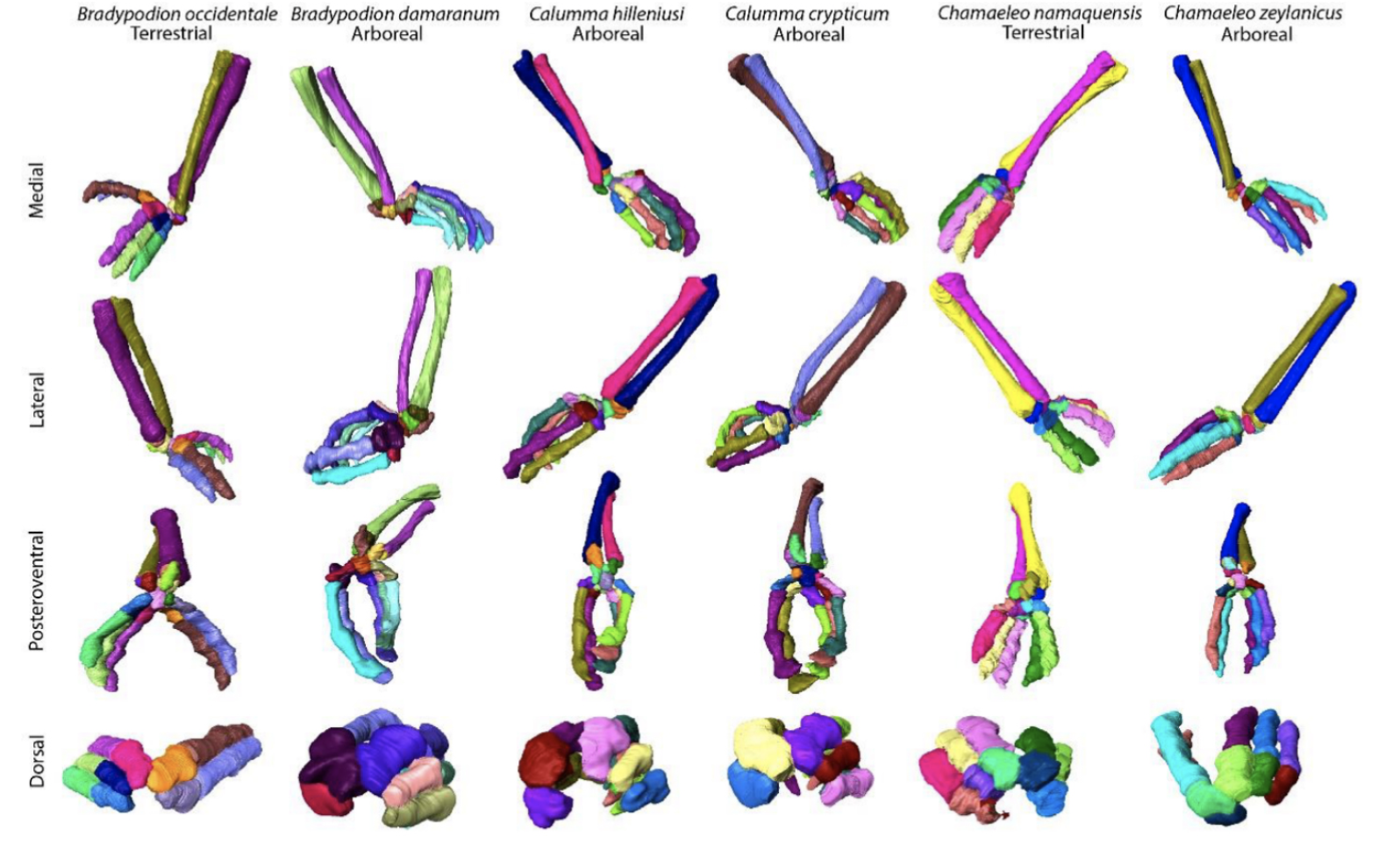Grasping Evolution: Chameleon Forelimbs Reveal Ecological Adaptation

In her 2023 honors thesis, Ecological and evolutionary drivers of chameleon forelimb variation, Ellie M. Schley investigates how forelimb morphology in chameleons reflects their ecological niches. Using high-resolution micro-CT scans, she analyzed the forearms and hands of 12 chameleon species—carefully selected to represent both arboreal and terrestrial lifestyles across multiple genera.
The study measured approximately 30 anatomical parameters per specimen, revealing a striking pattern: arboreal chameleons tend to retain separated metacarpals (digits 1–3), while terrestrial species often exhibit fused metacarpals. This suggests a functional divergence in grasping mechanics, likely shaped by the demands of climbing versus ground locomotion.
What makes this study stand out is its cross-generic comparison and its use of digital 3D modeling to quantify subtle skeletal differences. While previous studies offered conflicting results, Schley's work provides a clearer framework for understanding how ecological pressures sculpt limb anatomy in chameleons.
Though the sample size is modest, the findings open new avenues for exploring the biomechanics and evolutionary pathways of prehensile adaptation in reptiles.
Citation: Schley, E.M. (2023). Ecological and evolutionary drivers of chameleon forelimb variation. Honors Thesis 302, University of South Dakota.